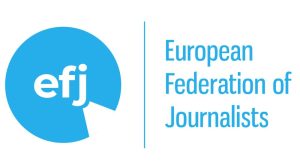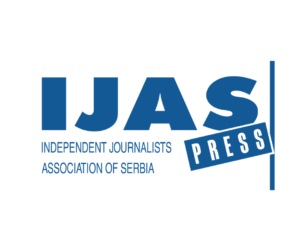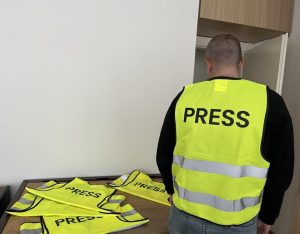Journalists sometimes find themselves in high-risk environments for their physical safety, because of the nature of the assignment or because they are ill-equipped and poorly trained in safety issues. According to a 2022 EFJ survey about the risk perceptions and safety concerns of journalists in Europe, media professionals seriously lack training and awareness while threats and intimidation at work are increasing.
Based on these findings, the ‘Local Cross-Border Investigative Journalism’ (CBLocal) project integrated an important element of journalists’ safety in its grant programme supporting cross-border investigations. Four journalists underwent an online safety course for two weeks with media safety expert David Bevan, security advisor for Al Jazeera and various prominent international journalists.
We spoke to two of the grantees, Carolina Rapezzi, a freelance photojournalist and Daniela Sala from FADA Collective, a collective of independent Italian journalists. We asked them about their perception of safety, where they’ve received advice from in the past and what they thought about the online safety course.
Were you aware of safety issues before taking this course? What kind of support have you received so far?
Carolina: Safety has always been a priority, even before the course and this is thanks to professional colleagues who have been close to me. I consider my colleagues’ support in the field as vital. Editors’ approach can be very supportive or very frustrating when desk needs are too “distant” from the reality on the ground.
Daniela: Yes, even before the course I was aware of safety. The knowledge I got in this field though, was mostly through peers and spontaneous advice and information exchange with other colleagues, therefore to have a space and time to discuss the issue with experts was really valuable. Recently, I was also able to attend an official HEFAT course thanks to a bursary by the Rory Peck Trust.
What did you think of the online safety course? Have you used any of the knowledge and techniques in your daily work?
C: The online course was very useful because it provided manuals with detailed information I can always go back to. I read it again recently before travelling to Israel and West Bank. Even if it’s not always possible to apply all the procedures it’s good to have them in mind and to know the options to those procedures.
D: The online course was yet another valuable opportunity to reflect on the importance of taking safety into account. As freelancers, unfortunately very often our only relationship with media companies and editors are when we pitch and file the stories, and more often than not, editors are not taking responsibility for our safety while reporting on the ground. This is why I believe it is crucial for us to gain as much knowledge as possible on how to prevent and mitigate risks. The course gave me a much better understanding of risk assessment and risk mitigation. The concept of a travel risk assessment was not entirely new to me, but thanks to this course I learned and improved my way of using this important tool. I also gained further knowledge around travel insurance. And in my following reporting to Iraq, I did apply this knowledge.
Still few journalists are trained on safety and those who are do not update their knowledge regularly. The situation is even more precarious for freelance journalists, who must self-fund their training. Did the course make you prioritise your safety more before carrying out an assignment?
C: The course gave me an in-depth knowledge of how to calculate risks and I always try to prioritise safety. I think safety training should be compulsory for journalists and, in a slightly different form, for editors too as even if they are not on the ground, it’s important that they understand the circumstances we work in. I also think safety courses should be free for all journalists working in certain areas and that the quality of the training should be coherent across companies.
D: To some extent yes. I believe that as journalists we bear a responsibility not only to our own safety but also to the safety of our colleagues and to the local sources and local communities. In this sense, to prioritise safety for me it also means to carry out our assignment doing whatever we can to prevent harm to other people. And to be capable of stepping back if this risk exists and we can not mitigate it. Depending on what kind of assignments and stories journalists work on, I believe that safety training is crucial. I believe trade unions and national associations of journalists should provide such training for free, on a regular basis.
What was your main concern regarding the project you are working on?
C: My biggest concern is the impunity for those targeting our job.
D: Mine is usually arrest/interrogation by State and non-State actors – with the risk of being forced to reveal the identity of local sources. Working mostly as a photographer, I am aware that sometimes my camera can attract further, unwanted attention, by authorities, especially when I am trying to visually document certain things in areas where I might not officially be allowed to. I always make sure to have a detailed knowledge of the area and to always follow the advice of the team members who are local in the area. I also make sure to delete and safely store into encrypted HD all the photos and visual materials that might be problematic – every day and whenever I am travelling. Together with the freelance colleagues from the collective I am part of, FADA, we also always have a back-up group on Signal that the colleagues from the collective use for daily – or if needed more frequent – check-ins, with the reporting team on the ground.
Source: EFJ




